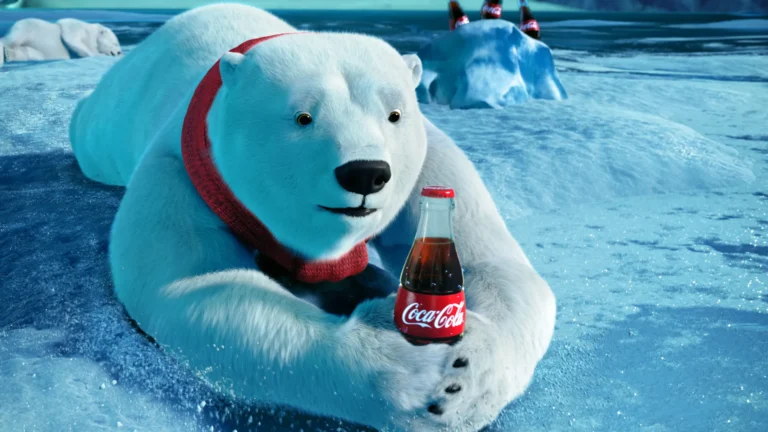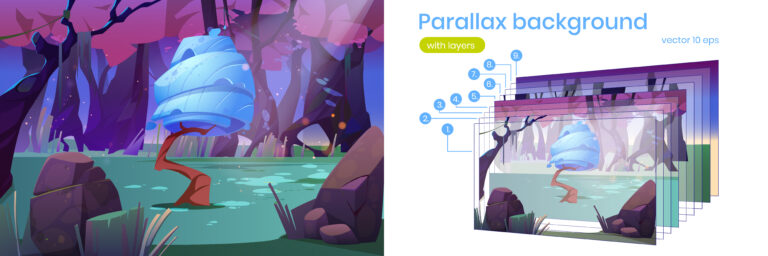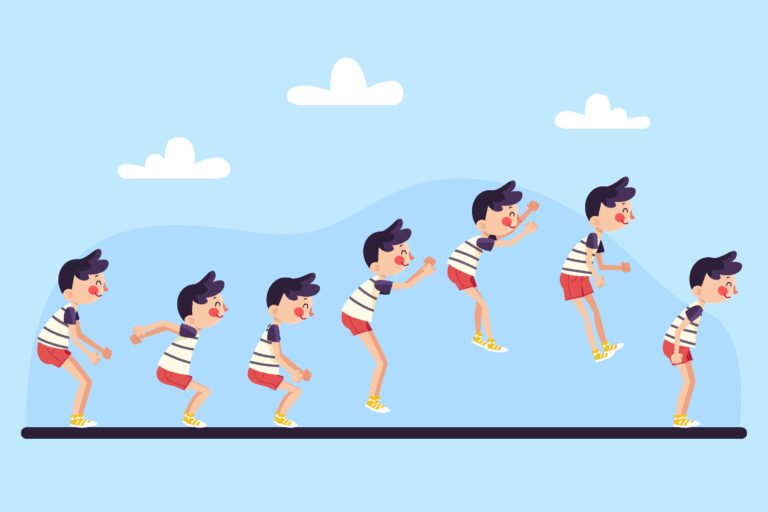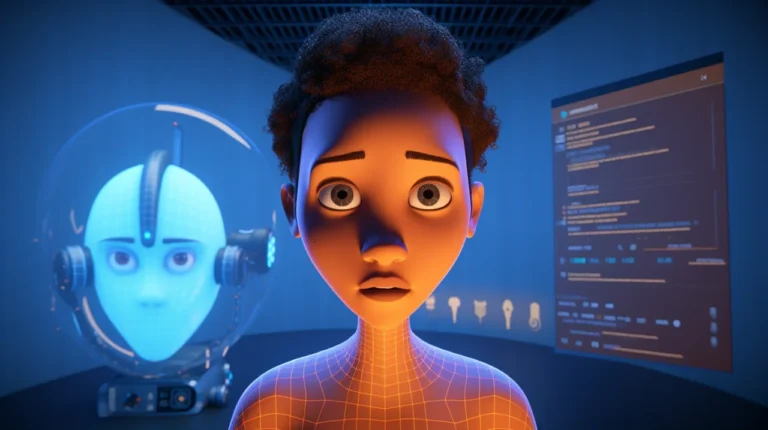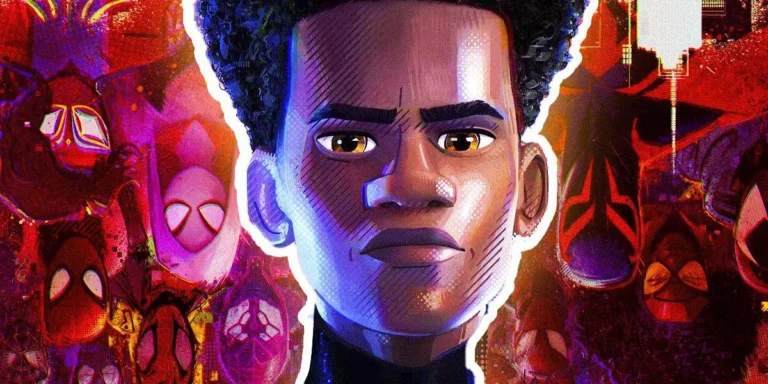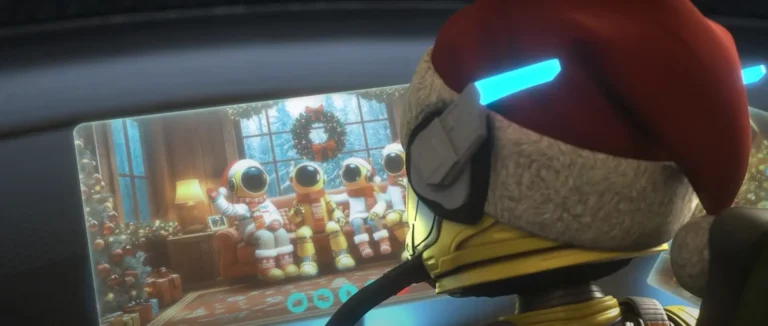Rigging is an essential stage in the world of 3D animation and game development that may be overlooked due to its technical nature for those who are not involved, but it supports a crucial part of both animators who move the characters and the project as a whole. This post goes behind the meaning of correct rigging and how it can influence animation behavior, the efficiency of the rigging pipeline, and even improve user experience.
Rigging is used to create the bone and control structure for a 3D model. The rig (the skeleton and its controls) is then used to animate the character in a stylized or realistic way. In simple words, rigging determines the range of movements your character or object can perform. Any model, no matter how detailed and artistically sculpted looks nothing but lifeless if it was not constructed well-rigged.

Need Animation Services?
Visit our Animation Service page to see how we can help bring your ideas to life!
1. Allows for Believable Movement
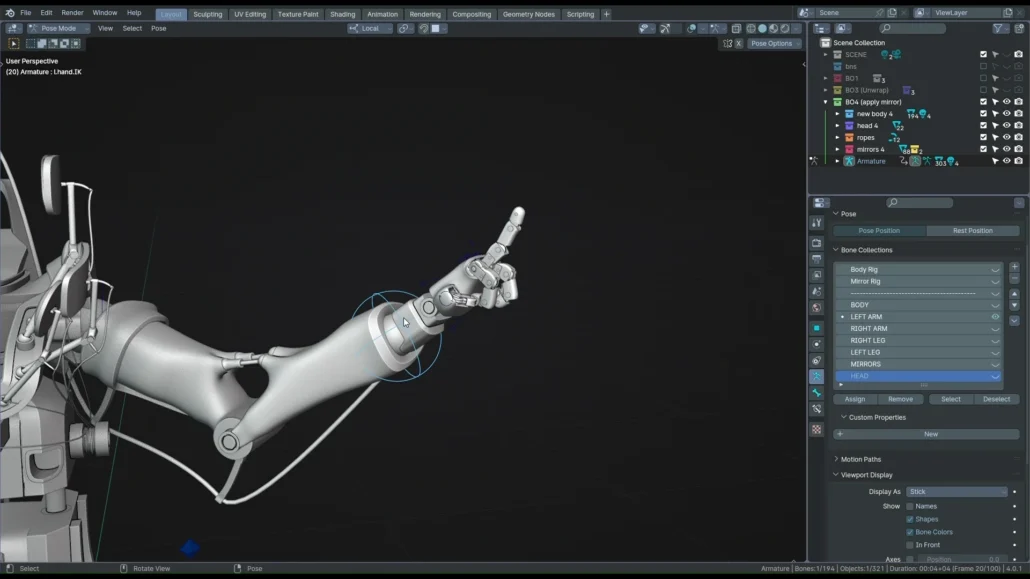
Correct rigging is mostly about making movement believable and organic. The figures and objects in a corresponding video game or animation will have to move as expected by the viewers; In the demo, a character’s walk cycle should resemble who they are while taking into account their physique and thumb world physics. Good rigging also makes it possible to convey a lot of information just with animations, such as emotions and intentions without much or any wording.
A rig needs to be flexible enough that it can achieve the range of movement while also being stable enough that you can’t over-rotate a joint and break an otherwise perfectly good illusion. This would mean rigging elbow joints to bend properly, while also being limited in its twisting capabilities so the forearm is not allowed to twist on a physical impossibility.
2. Enhances Animator Efficiency
Well-thought-out rigs are clean and ergonomic, meaning animators can concentrate on the craft of animation rather than getting frustrated by little mechanical irritants. A well-rigged character will have controls that are easy to manipulate, which makes the animation process faster and means less time is spent tweaking. The swiftness is essential when on business grounds, where time returns the money and there are deadlines just around the corner.
Proper rigging is not just having a correct skeletal system but it also comprises features like inverse kinematics (IK) which helps in the simple animation of limbs and thereby decreases the number of controls that an animator needs to attend. You can really speed things up for long advanced animations with this setup.
3. It Allows for Animation Consistency
For big projects if more than one animator is working for the same character at a different time. A pelleted character will keep the same form from shot to shot, no matter who is animating. Consistency is critical when it comes to the quality and continuity of a character’s movements across an entire game or film.
A standardized rig also enables animation retargeting that lets animators take a set of movements and wear them like clothes on any other character without having to animate every single one from scratch. This is particularly useful if you run several characters of the same type in whatever game.
4. Enables Complex Interactions
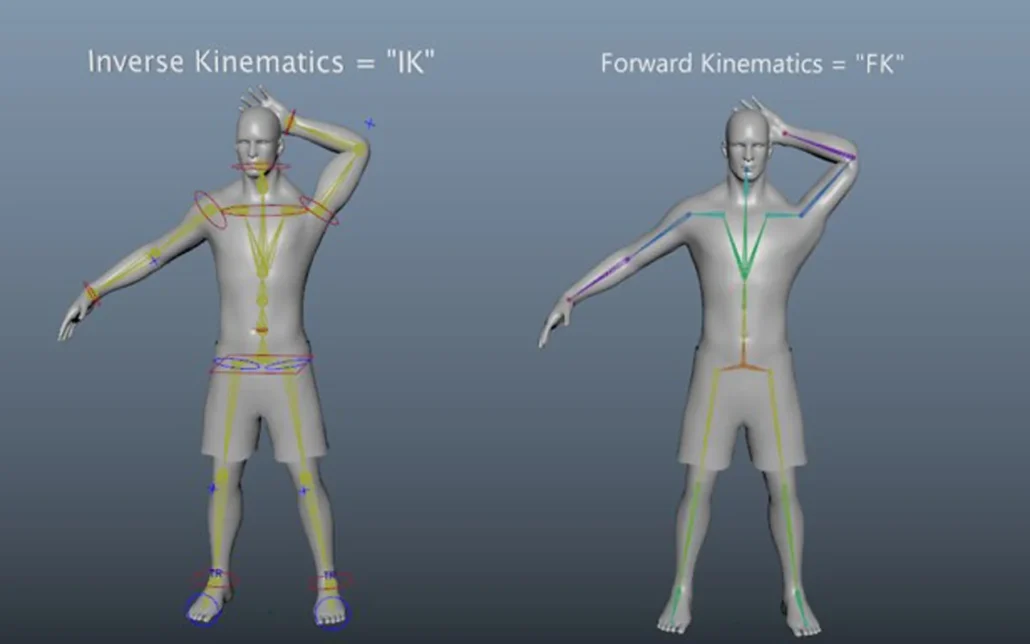
Characters move around on the screen to interact with other characters or elements of the game or animation. Now for person-person interactions like hugs, etc, proper rigging ensures these types of interactions are possible and believable. A fully well-rigged character can easily fit into various actions like picking up stuff, moving through combat, etc. For example, a character picking up an object needs to have a rig that shows how her weight has now increased due to it; so she might change in how she stands, and also swing or react against applied forces.
On top of that, the rig needs to be compatible with the game’s physics engine for dynamic interactions. This compatibility stands to preserve the illusion of a consistent world, wherein all pieces are bound by equivalent laws. Characters will clip through solid objects, fail to grab things correctly, or have animations that pull you out/reduce immersion and make any player-driven cinematics completely unviable.
5. Impacts Visual Aesthetics
Quality rigging has a big impact on the visual consistency of characters in digital media. Mesh deformation and skinning: Mesh, especially human-like characters can be deformed or rigged badly where the mesh is stretched unnaturally or weights are assigned wrong causing bizarre-looking results. These issues take away from the fleshing-out of a particular character and break immersion for the player as they become wrapped up in an unrealistic trope.
Rigging also helps make animations look better, by providing clean transitions between poses and keeping character sizes/rights in check with different scenarios. Such control is extremely important in class animations wherein characters often have to appear natural and believable or an artistic eye-sore. A well-crafted rig not only assumes responsibility for better animations, it also enforces the visual style and consistency of a character across your game or film.
6. Allows a Multitude of Facial Expressions
This is so important in order to show the emotional state of a character and make our stories rich with details. A good facial rig will take you from the light rise of an eyebrow to full-out dramatic expression for those heavy emotional scenes. Proper facial rigging employs a mixture of bone structures and morph targets (or blend shapes) that effectively copy the intricate movements made by human muscle groups in order to help relay subtle character performances, to which audiences can relate.
Rigging for narrative-driven games/films is equally significant because characters make up the majority of the storyline. This contributes largely to the overall narrative of showing, not telling the audience what a character feels instead of being simply told that they smirked or were confused. Therefore, a well-rigged face directly improves the narrative and helps the character be more relatable and interesting.
7. Reduces Costs in the Long Run
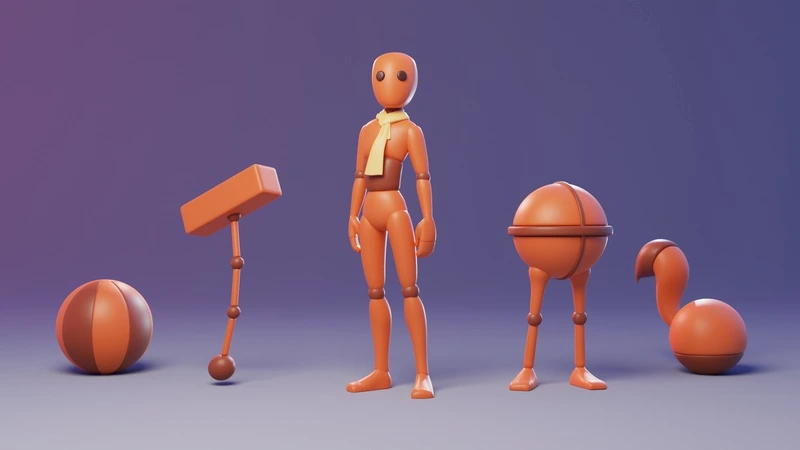
Fairly investing in rigging at the beginning of a project pays off with long-term cost savings. Using a well-built rig can save an animator time and money, as they will not have to go back directly at your request for changes or fixes. On top of it a strong rig can accommodate multiple animations without alterations making this flexibility much easier to reuse across other scenes and even different projects.
Additionally, a good rig will last long enough to be re-used as the base for upcoming character rigs, so you may not need to start from scratch on character rigging. This reusability is especially useful in projects that are similar, such as different characters or sequels, where the same body shapes and motion plans might be required. Standardizing rigging practices allows studios to optimize their production processes so that resources can be more effectively split between problem-solving in the form of technical issues and creative energy.
8. Improves Real-Time Performance
Good rigging is good enough to keep your real-time applications performing nimbly like video games. An over-the-top rig with volumes of joints or poor skiing weights will absolutely diminish the game’s fps and overall performance. Rigs need to be designed with just enough detail and functionality while ensuring the performance of the platform. This usually means making tactical sacrifices to quickly generate the most improved visual finishes without overburdening them on any hardware.
Furthermore, proper rigging also supports additional performance features such as LOD (Level of Detail) systems where different configurations in the character’s rig are used based on screen distance to further optimize scenes. A good LOD system helps manage the game to maintain frame rates by increasing or decreasing the complexity of character rigs on low-end hardware whilst maintaining visual and gameplay quality.
9. Supporting New Technologies
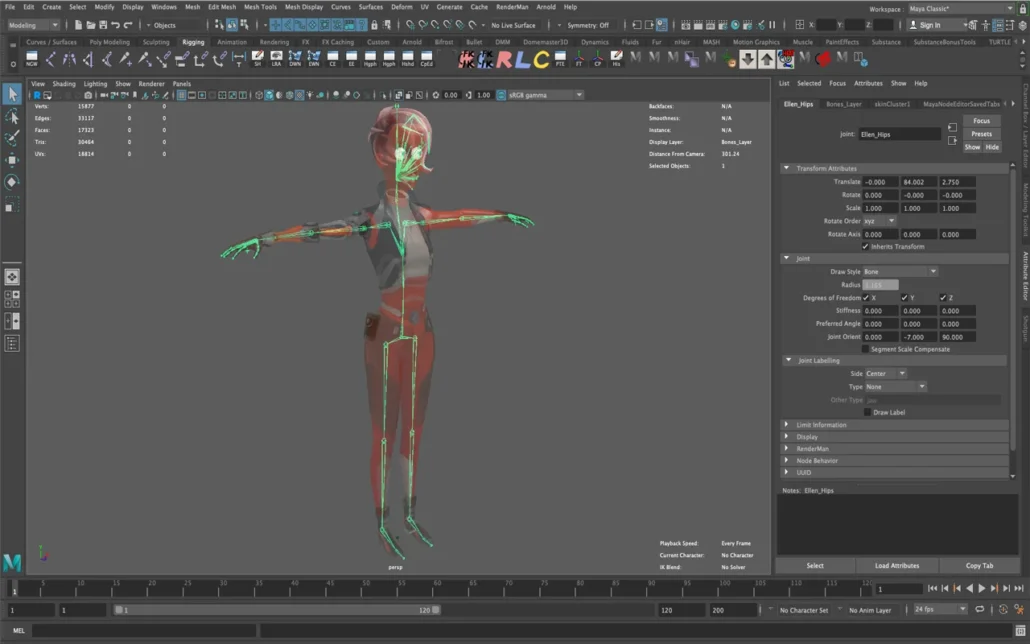
Virtual reality (VR) and augmented reality (AR), as they mature, are tightening the demands on rigging. This stuff requires really reactive and high-fidelity rigs to make the experience immersive and believable for interaction as we understand it in real life. Quality 3D rigging services allows characters to move smoothly in these new worlds, better immersing the user by matching their physical movements with virtual ones.
Moreover, the better productivity of motion capture technology in animation and game development particularly demands rigs that can more precisely translate genuine human movements into digital characters. This means that it requires high-end rigs that can process the precise data from mocap while steering clear of uncanny valley territory by not having “hyper-realistic” human-like movements. Correctly rigged characters are crucial to making the most out of these new technologies, allowing creators to provide more immersive and realistic experiences for their users as a result.
Conclusion
Rigging is very essential part of the 3D animation and game development process. Not only does it make sure that characters and objects move in a way which is looking real as well-as helps the effectiveness of large-scale production. Proper rigging practices are essential for visual consistency, complex interactions, and expressive character animations necessary to tell a story. Developers are likely to save time, reduce costs, and set apart their work from others in the digital media with quality rigging investments – right at the beginning of the project.
If you’re embarking on a project and need expert assistance with rigging, whether it be 2D or 3D, consider reaching out to us at Pixune Studio. We have a wealth of experience in rigging for various types of projects, ensuring that your characters move and express themselves fluidly and believably. Our team is ready to help you bring your visions to life with professional rigging solutions that can transform your animations and enhance your overall project quality. Contact us today to learn how we can support your project with our extensive animation services and help you achieve your creative goals.

